Stefano Faralli
Large-scale Taxonomy Induction Using Entity and Word Embeddings
May 04, 2021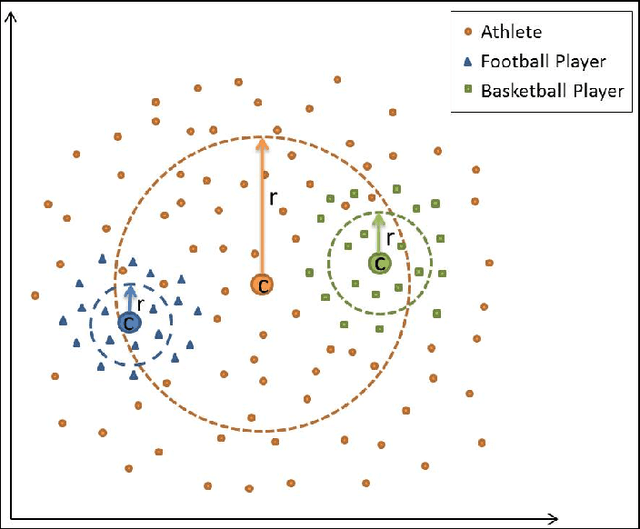
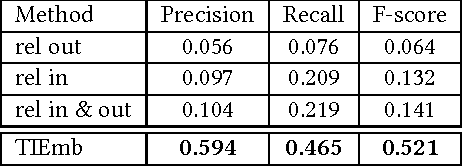

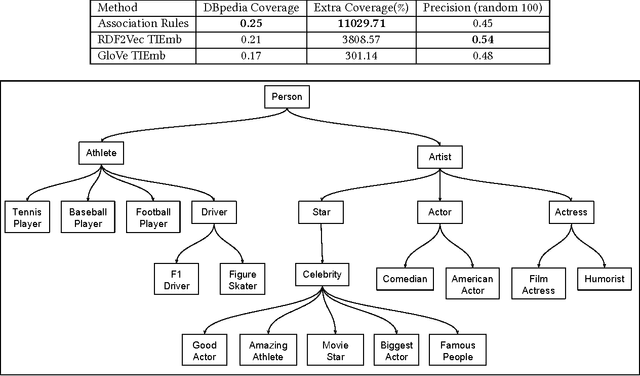
Abstract:Taxonomies are an important ingredient of knowledge organization, and serve as a backbone for more sophisticated knowledge representations in intelligent systems, such as formal ontologies. However, building taxonomies manually is a costly endeavor, and hence, automatic methods for taxonomy induction are a good alternative to build large-scale taxonomies. In this paper, we propose TIEmb, an approach for automatic unsupervised class subsumption axiom extraction from knowledge bases using entity and text embeddings. We apply the approach on the WebIsA database, a database of subsumption relations extracted from the large portion of the World Wide Web, to extract class hierarchies in the Person and Place domain.
Enriching Frame Representations with Distributionally Induced Senses
Mar 15, 2018

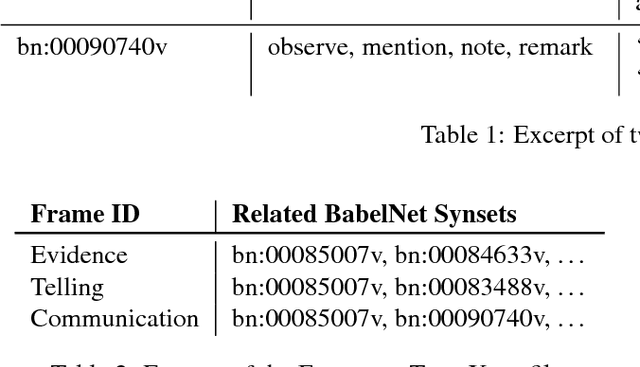
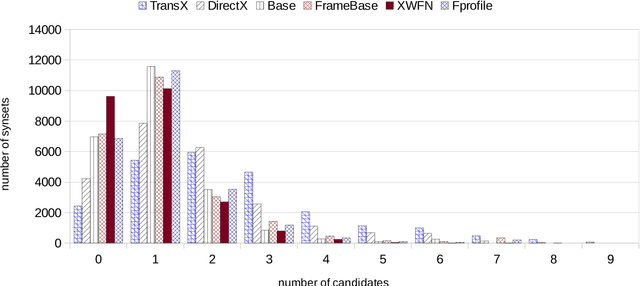
Abstract:We introduce a new lexical resource that enriches the Framester knowledge graph, which links Framnet, WordNet, VerbNet and other resources, with semantic features from text corpora. These features are extracted from distributionally induced sense inventories and subsequently linked to the manually-constructed frame representations to boost the performance of frame disambiguation in context. Since Framester is a frame-based knowledge graph, which enables full-fledged OWL querying and reasoning, our resource paves the way for the development of novel, deeper semantic-aware applications that could benefit from the combination of knowledge from text and complex symbolic representations of events and participants. Together with the resource we also provide the software we developed for the evaluation in the task of Word Frame Disambiguation (WFD).
Building a Web-Scale Dependency-Parsed Corpus from CommonCrawl
Feb 28, 2018


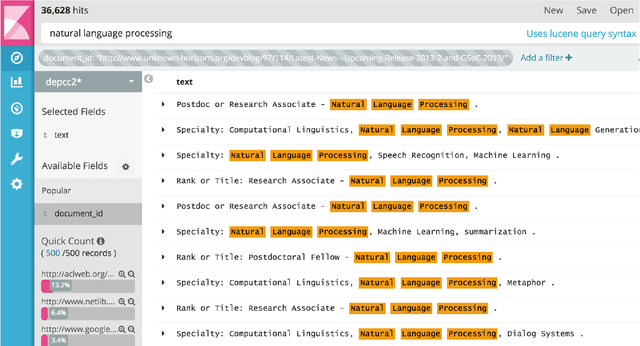
Abstract:We present DepCC, the largest-to-date linguistically analyzed corpus in English including 365 million documents, composed of 252 billion tokens and 7.5 billion of named entity occurrences in 14.3 billion sentences from a web-scale crawl of the \textsc{Common Crawl} project. The sentences are processed with a dependency parser and with a named entity tagger and contain provenance information, enabling various applications ranging from training syntax-based word embeddings to open information extraction and question answering. We built an index of all sentences and their linguistic meta-data enabling quick search across the corpus. We demonstrate the utility of this corpus on the verb similarity task by showing that a distributional model trained on our corpus yields better results than models trained on smaller corpora, like Wikipedia. This distributional model outperforms the state of art models of verb similarity trained on smaller corpora on the SimVerb3500 dataset.
Improving Hypernymy Extraction with Distributional Semantic Classes
Feb 28, 2018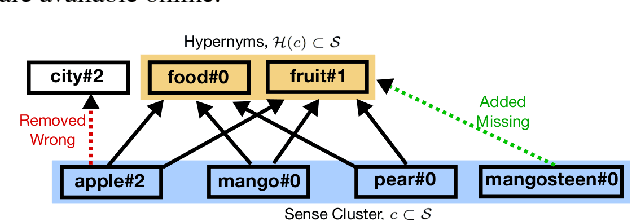



Abstract:In this paper, we show how distributionally-induced semantic classes can be helpful for extracting hypernyms. We present methods for inducing sense-aware semantic classes using distributional semantics and using these induced semantic classes for filtering noisy hypernymy relations. Denoising of hypernyms is performed by labeling each semantic class with its hypernyms. On the one hand, this allows us to filter out wrong extractions using the global structure of distributionally similar senses. On the other hand, we infer missing hypernyms via label propagation to cluster terms. We conduct a large-scale crowdsourcing study showing that processing of automatically extracted hypernyms using our approach improves the quality of the hypernymy extraction in terms of both precision and recall. Furthermore, we show the utility of our method in the domain taxonomy induction task, achieving the state-of-the-art results on a SemEval'16 task on taxonomy induction.
A Framework for Enriching Lexical Semantic Resources with Distributional Semantics
Dec 23, 2017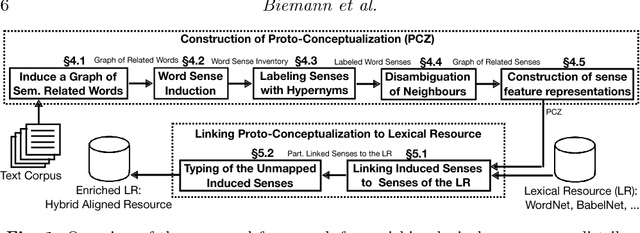

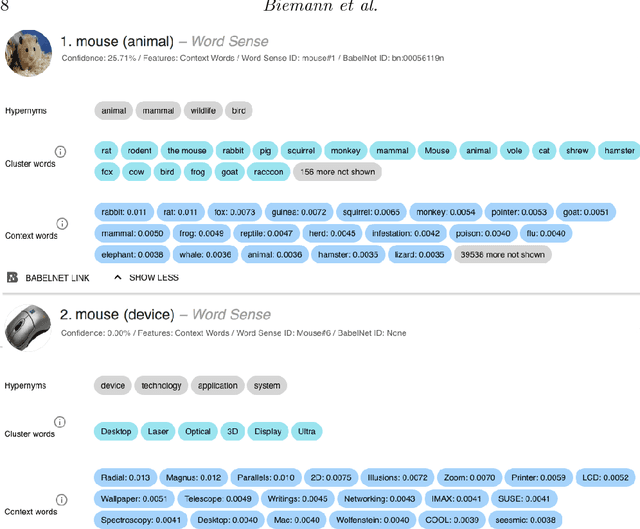

Abstract:We present an approach to combining distributional semantic representations induced from text corpora with manually constructed lexical-semantic networks. While both kinds of semantic resources are available with high lexical coverage, our aligned resource combines the domain specificity and availability of contextual information from distributional models with the conciseness and high quality of manually crafted lexical networks. We start with a distributional representation of induced senses of vocabulary terms, which are accompanied with rich context information given by related lexical items. We then automatically disambiguate such representations to obtain a full-fledged proto-conceptualization, i.e. a typed graph of induced word senses. In a final step, this proto-conceptualization is aligned to a lexical ontology, resulting in a hybrid aligned resource. Moreover, unmapped induced senses are associated with a semantic type in order to connect them to the core resource. Manual evaluations against ground-truth judgments for different stages of our method as well as an extrinsic evaluation on a knowledge-based Word Sense Disambiguation benchmark all indicate the high quality of the new hybrid resource. Additionally, we show the benefits of enriching top-down lexical knowledge resources with bottom-up distributional information from text for addressing high-end knowledge acquisition tasks such as cleaning hypernym graphs and learning taxonomies from scratch.
Unsupervised, Knowledge-Free, and Interpretable Word Sense Disambiguation
Jul 21, 2017

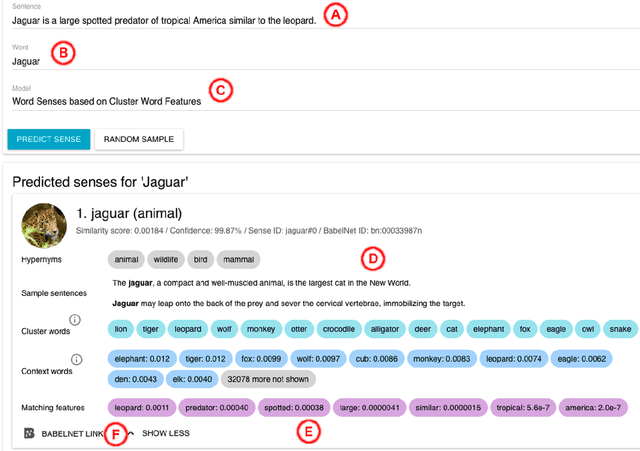
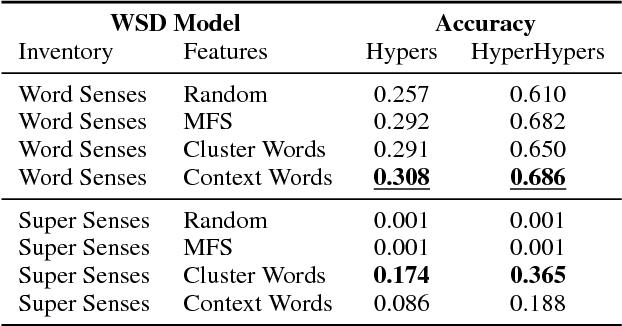
Abstract:Interpretability of a predictive model is a powerful feature that gains the trust of users in the correctness of the predictions. In word sense disambiguation (WSD), knowledge-based systems tend to be much more interpretable than knowledge-free counterparts as they rely on the wealth of manually-encoded elements representing word senses, such as hypernyms, usage examples, and images. We present a WSD system that bridges the gap between these two so far disconnected groups of methods. Namely, our system, providing access to several state-of-the-art WSD models, aims to be interpretable as a knowledge-based system while it remains completely unsupervised and knowledge-free. The presented tool features a Web interface for all-word disambiguation of texts that makes the sense predictions human readable by providing interpretable word sense inventories, sense representations, and disambiguation results. We provide a public API, enabling seamless integration.
 Add to Chrome
Add to Chrome Add to Firefox
Add to Firefox Add to Edge
Add to Edge